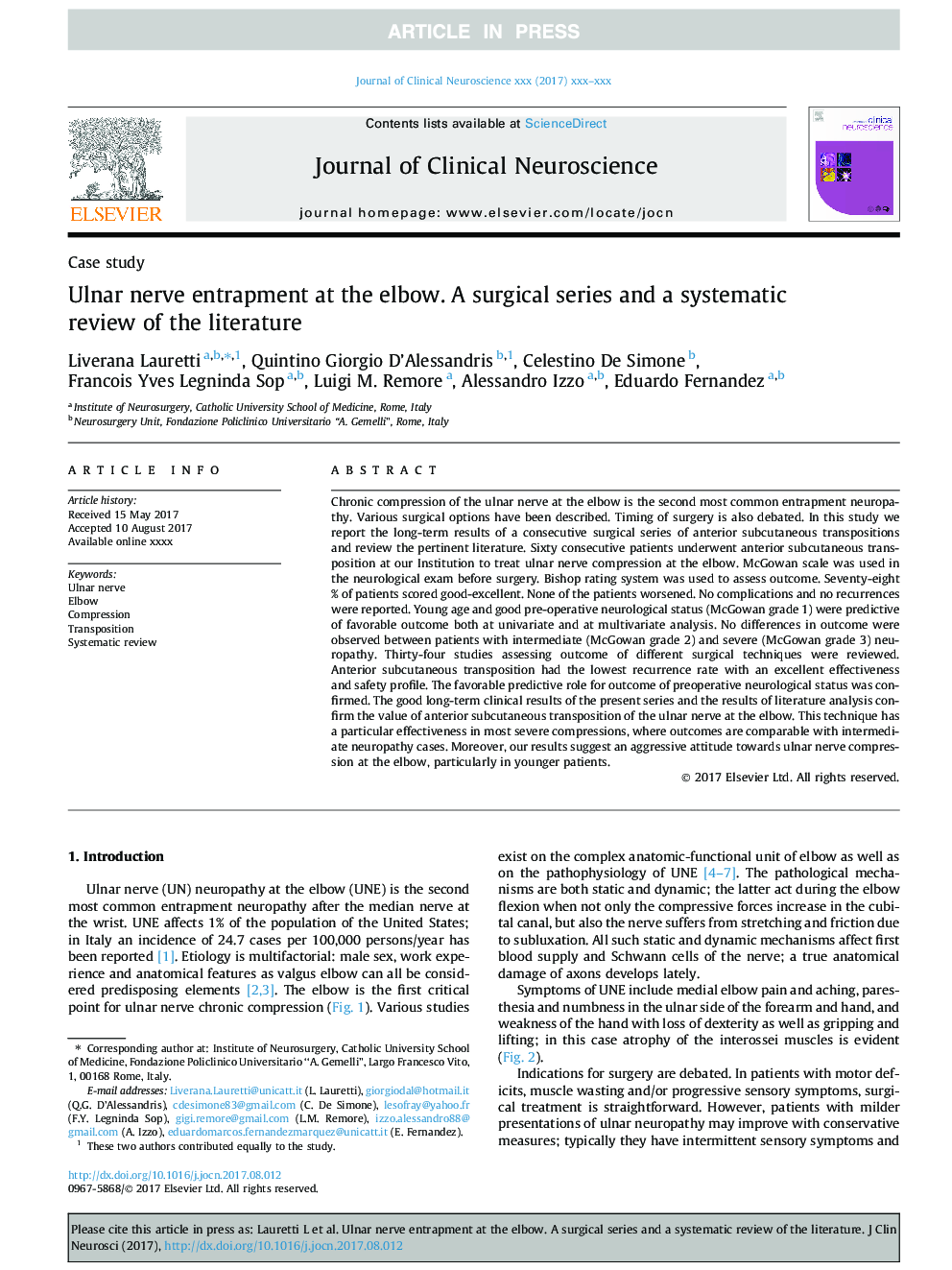| Article ID | Journal | Published Year | Pages | File Type |
|---|---|---|---|---|
| 8685474 | Journal of Clinical Neuroscience | 2017 | 10 Pages |
Abstract
Chronic compression of the ulnar nerve at the elbow is the second most common entrapment neuropathy. Various surgical options have been described. Timing of surgery is also debated. In this study we report the long-term results of a consecutive surgical series of anterior subcutaneous transpositions and review the pertinent literature. Sixty consecutive patients underwent anterior subcutaneous transposition at our Institution to treat ulnar nerve compression at the elbow. McGowan scale was used in the neurological exam before surgery. Bishop rating system was used to assess outcome. Seventy-eight% of patients scored good-excellent. None of the patients worsened. No complications and no recurrences were reported. Young age and good pre-operative neurological status (McGowan grade 1) were predictive of favorable outcome both at univariate and at multivariate analysis. No differences in outcome were observed between patients with intermediate (McGowan grade 2) and severe (McGowan grade 3) neuropathy. Thirty-four studies assessing outcome of different surgical techniques were reviewed. Anterior subcutaneous transposition had the lowest recurrence rate with an excellent effectiveness and safety profile. The favorable predictive role for outcome of preoperative neurological status was confirmed. The good long-term clinical results of the present series and the results of literature analysis confirm the value of anterior subcutaneous transposition of the ulnar nerve at the elbow. This technique has a particular effectiveness in most severe compressions, where outcomes are comparable with intermediate neuropathy cases. Moreover, our results suggest an aggressive attitude towards ulnar nerve compression at the elbow, particularly in younger patients.
Related Topics
Life Sciences
Neuroscience
Neurology
Authors
Liverana Lauretti, Quintino Giorgio D'Alessandris, Celestino De Simone, Francois Yves Legninda Sop, Luigi M. Remore, Alessandro Izzo, Eduardo Fernandez,
